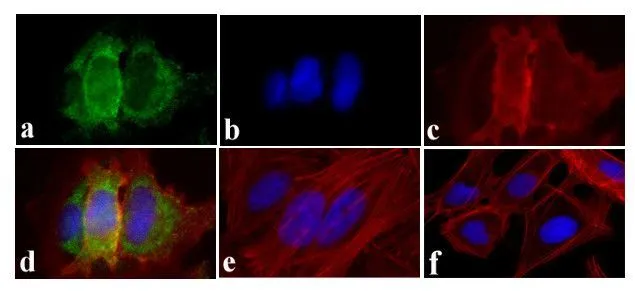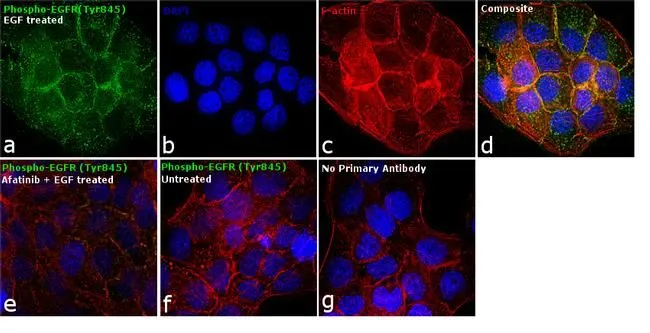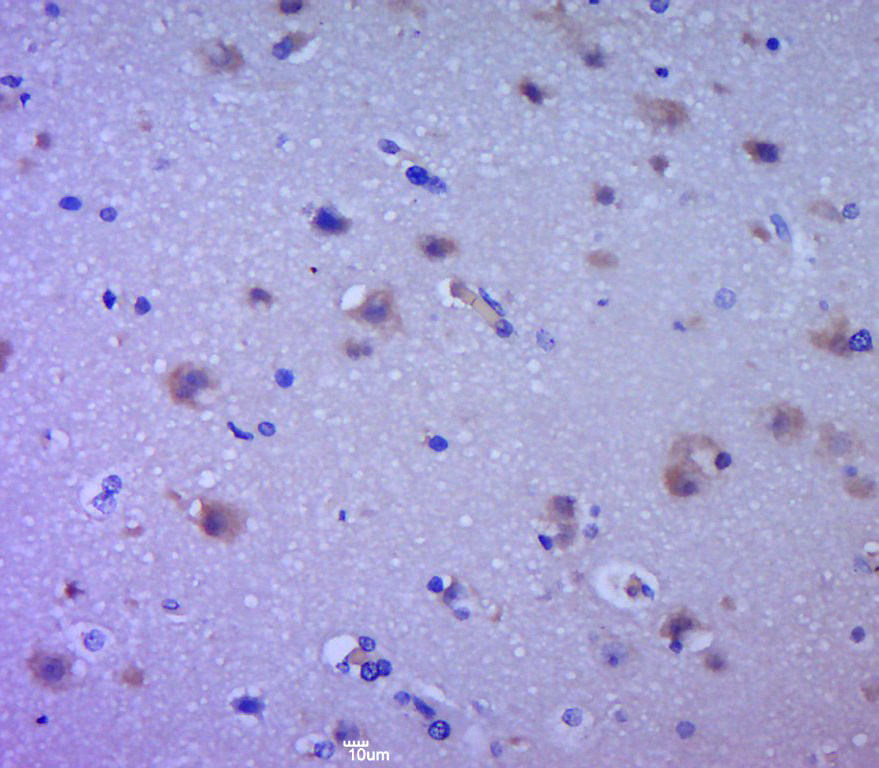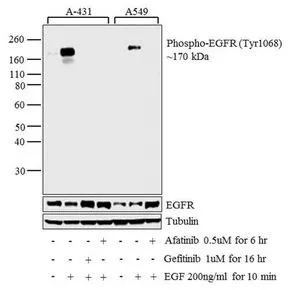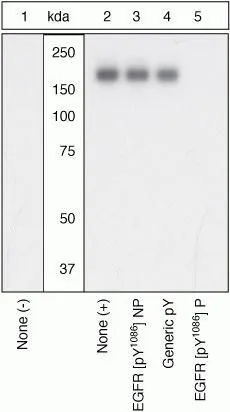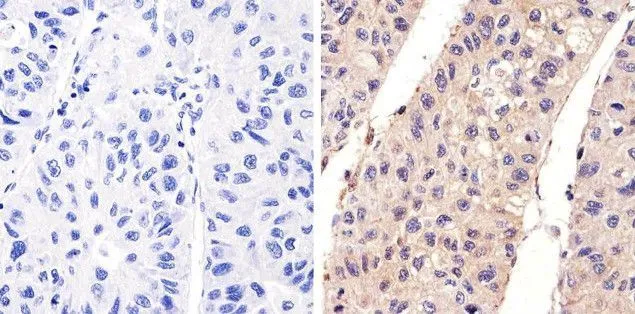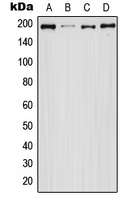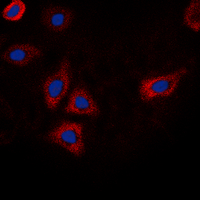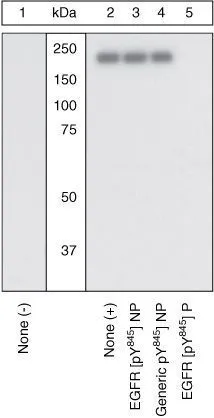
WB analysis of samples using GTX25636 EGFR (phospho Tyr845) antibody. The data show that only the immunogen phosphopeptide blocks the signal, demonstrating the specificity of the antibody.
EGFR (phospho Tyr845) antibody
GTX25636
ApplicationsImmunoFluorescence, Western Blot, ImmunoCytoChemistry, ImmunoHistoChemistry
Product group Antibodies
TargetEGFR
Overview
- SupplierGeneTex
- Product NameEGFR (phospho Tyr845) antibody - Orthogonal Validated
- Delivery Days Customer9
- Application Supplier NoteICC/IF: 1:250. *Optimal dilutions/concentrations should be determined by the researcher.Not tested in other applications.
- ApplicationsImmunoFluorescence, Western Blot, ImmunoCytoChemistry, ImmunoHistoChemistry
- CertificationResearch Use Only
- ClonalityPolyclonal
- ConjugateUnconjugated
- Gene ID1956
- Target nameEGFR
- Target descriptionepidermal growth factor receptor
- Target synonymsavian erythroblastic leukemia viral (v-erb-b) oncogene homolog; cell growth inhibiting protein 40; cell proliferation-inducing protein 61; epidermal growth factor receptor; epidermal growth factor receptor tyrosine kinase domain; ERBB; ERBB1; erb-b2 receptor tyrosine kinase 1; ERRP; HER1; mENA; NISBD2; PIG61; proto-oncogene c-ErbB-1; receptor tyrosine-protein kinase erbB-1
- HostRabbit
- IsotypeIgG
- Protein IDP00533
- Protein NameEpidermal growth factor receptor
- Scientific DescriptionThe protein encoded by this gene is a transmembrane glycoprotein that is a member of the protein kinase superfamily. This protein is a receptor for members of the epidermal growth factor family. EGFR is a cell surface protein that binds to epidermal growth factor. Binding of the protein to a ligand induces receptor dimerization and tyrosine autophosphorylation and leads to cell proliferation. Mutations in this gene are associated with lung cancer. [provided by RefSeq, Jun 2016]
- Storage Instruction-20°C or -80°C,2°C to 8°C
- UNSPSC12352203

